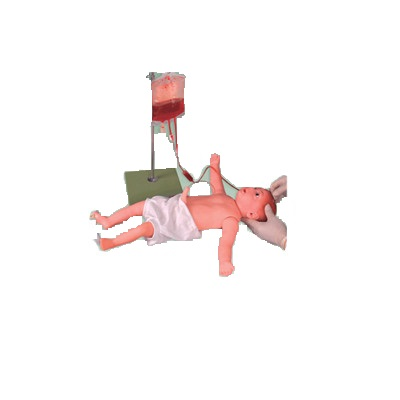Welcome to visitShanghai Chinon medical Model & Equipment Manufacturing Co., LTD
Venipunction in children is a highly skilled procedure for doctors, especially in emergency rooms, hospitalizations and some routine examinations, and successful venipunction is essential to ensure timely medication and fluid supplementation. However, the veins of children are smaller and deeper than those of adults, and the puncture operation requires not only higher accuracy, but also strong judgment and operational experience of medical staff. In this context, the children's venipuncture simulation arm, as a highly simulated training device, provides a valuable learning opportunity.

1. Simulate real vein structure to provide accurate training
The complexity of children's venipuncture mainly comes from the small and irregular blood vessels of children. The simulation arm uses highly simulated materials to reproduce the skin and vein direction of real children, and can simulate the vein characteristics of children of different ages. Through the simulated arm, students and doctors can practice repeatedly in a risk-free environment to master the technique of venipuncture and ensure precision.
2. Frequent practice opportunities
In traditional medical training, due to the scarcity of real cases, it is difficult for doctors and nurses to get enough practical operation opportunities, especially in the highly technical operation of children's venipuncture. The appearance of the artificial arm breaks through this limitation. Whether in the classroom or in individual exercises, the simulated arm provides a large number of simulation opportunities, enabling medical students to practice repeatedly until they become proficient in piercing techniques.
Shorter learning curve: Data show that students who receive simulated arm training have a nearly 30% higher success rate and operational proficiency in venipunction than students who do not receive simulated training.
- Instant feedback: Some simulated arms are also equipped with sensors that can provide real-time feedback on the depth and position of the puncture, helping students accurately determine whether the operation is correct, thus greatly improving the efficiency of practice.
3. Reduce clinical risks and improve safety
Due to the difficulty of venipuncture in children, especially in emergency or critical patients, misoperation may lead to complications such as venous injury and bleeding. The artificial arm provides a safe platform for students to practice without fear of harm to patients due to misoperation. This risk-free environment greatly reduces the operational risks in the clinic, while also helping students increase their confidence when operating.
4. Improve skills through data-supported teaching
Some advanced children's venipuncture simulation arms are equipped with data recording and analysis systems that are able to collect and analyze the student's operational data. These data include key indicators such as speed, depth and Angle of puncture, which can effectively help students evaluate their shortcomings in operation and make targeted improvements according to feedback. This data-based training method not only enables students to master skills faster, but also provides a more scientific teaching basis for medical education.
5. Conclusion: Provide adequate support for clinical skill development
The complexity of children's venipentesis operation requires doctors to have exquisite technology and rich clinical experience, and the application of simulation arm effectively fills the practice gap in traditional training. It can not only provide a lot of repeated practice opportunities, shorten the learning curve, but also through accurate feedback and data support, help students and doctors to improve the accuracy of the operation and reduce clinical risk. In this way, the simulated arm provides medical students with ample hands-on opportunities to better prepare them for future clinical challenges.
|
NEXTпјљHow can I improve my clinical skills through anatomical models of upper limb muscles?
LASTпјљCan the shoulder joint model provide more accurate clinical simulation training? |
Return list |